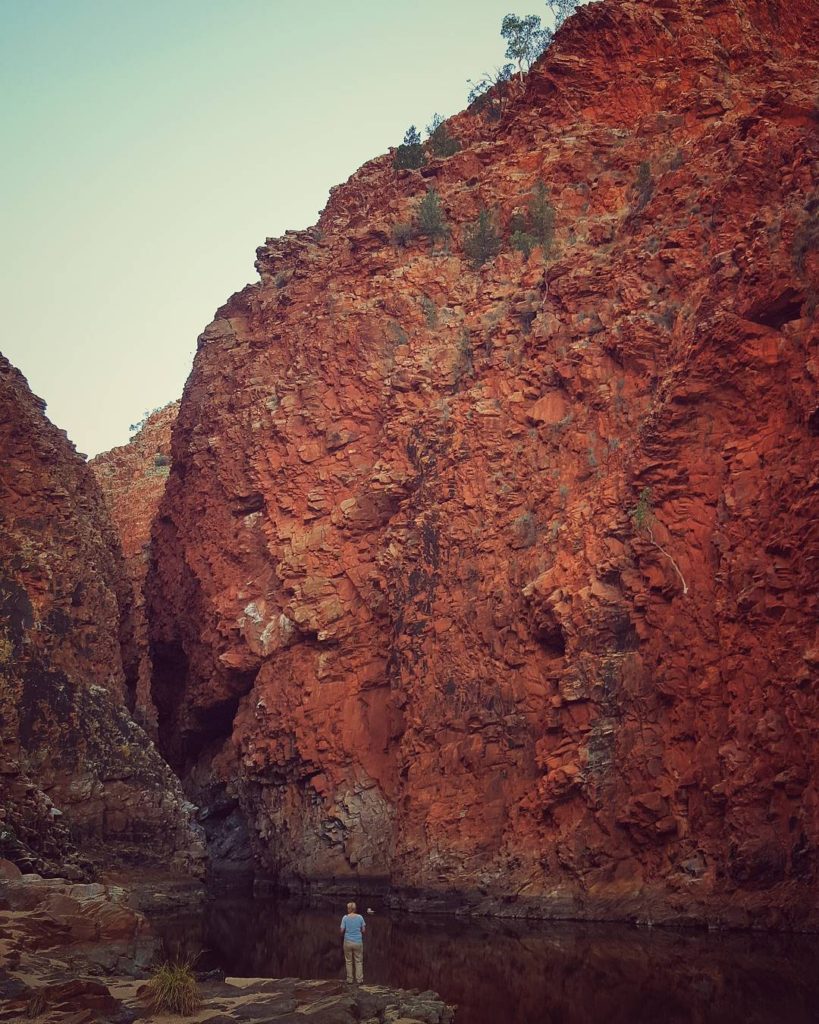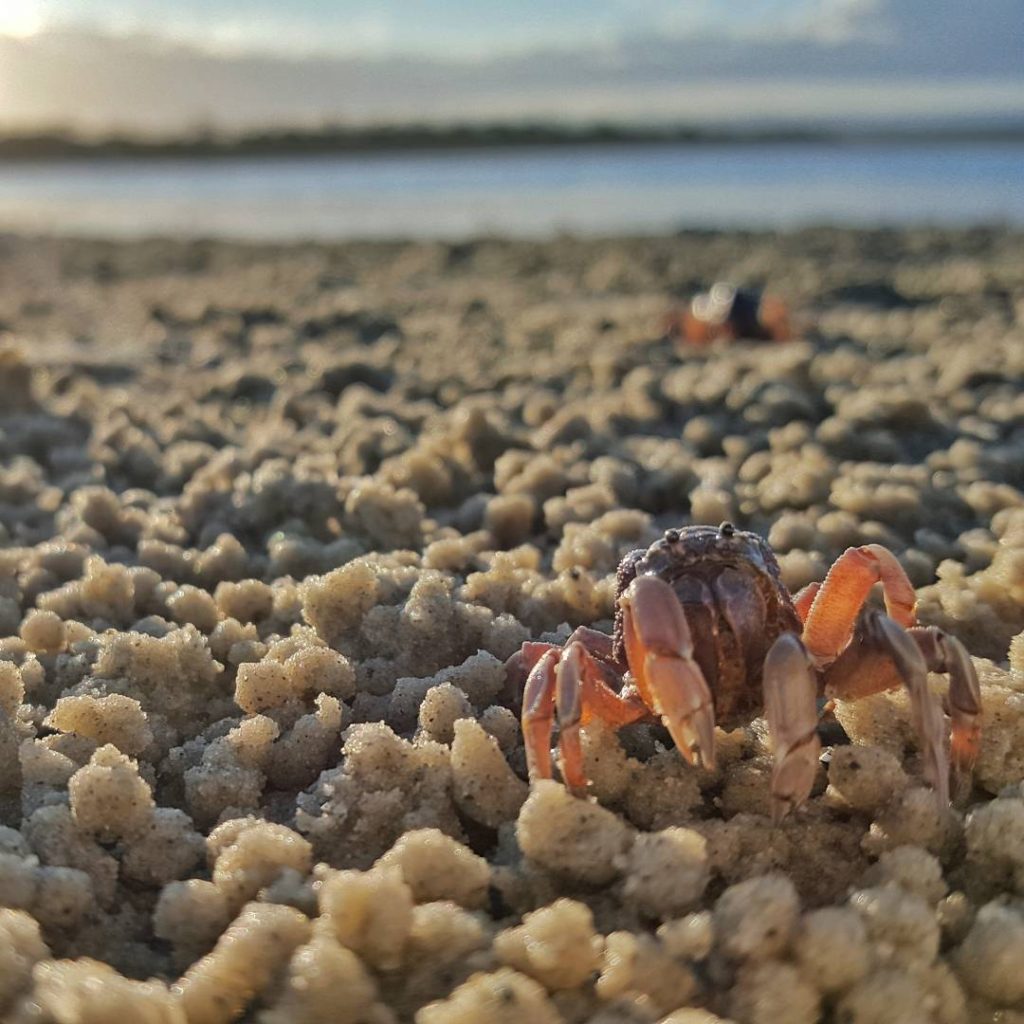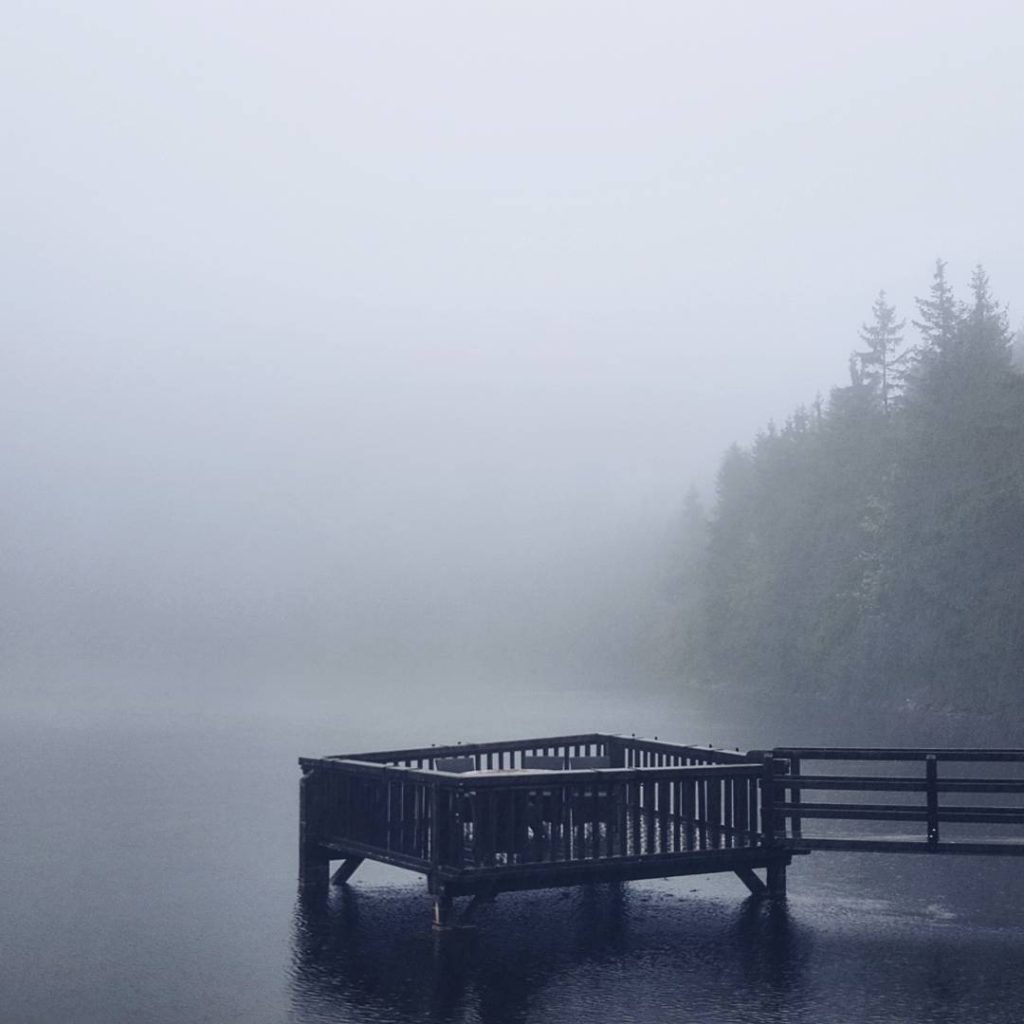
by Grryo Community | Oct 13, 2017 | Black and White, Mobile Photography, Stories, Storyteller, StreetPhotography, You Are Grryo
Since childhood I have considered myself an observer of everything that surrounds me and excites me. Photography has given me the ability to return to those important moments through images, and I’ve always found this fascinating. I’m more aware of it now, this possibility to go back and remember. I still recall with emotion when my grandparents gave me their Kodak INSTAMATIC X-15 for taking pictures. From that moment on I was held captive by anything that would appear in the viewfinder. Nowadays, I feel it’s essential to take photos daily, as it’s a visual and very personal record of everyday life.

This has evolved, in such a way that the traditional consumer of images has now become a “prosumer”, generating and offering their perspective on social networks. As a reference, let’s consider the scope of mobile photography, which has become a powerful tool for telling stories. Personally, it has allowed me to meet interesting characters on the streets and made it easier for me to approach the issues relevant to my environment.

In my pictures I try to capture the contrasts of light and the details of the characters, silhouettes and objects. I think that the best light to do this in is daylight; I only need to go for a walk with a pair of comfortable shoes and my cell phone fully charged. On the streets, a certain look can be intriguing. You can stop, get closer to your subject, or respect their anonymity and take a picture without them noticing and just thank them afterwards. The streets are pure emotion, that is where the stories are.

Personally, I’ve never liked to capture misery or the degrading condition of the human being; this has never caught my attention. On the other hand, shadows, contrasts and the characters that emerge from them, spontaneous symmetry and natural gestures, these are more interesting to me for generating my visual discourse.

Chihuahua city is located in the north of Mexico and, being close to the border, we have an interesting cultural mix. This has caught my attention and led me to title one of my projects: Puro Norte. In it I present urban portraits of individuals with expressions and in activities denoting the identity, clothing, instruments and poses of the urban cowboy, in costumes from a western film.


Go out, walk and be alert, but don’t stop enjoying the ride and the experience. This is where objects and people have something to say, have made their own history and are waiting to be seen. It’s all about going out to look for them in order to find them.

I prefer to document my own environment without expectations and tell the tales of what I see in my own way, though pictures. I don’t ask for poses and often I don’t ask for permission, but I watch and wait for the moment instead. Photography has given me the opportunity to meet some unique characters; it’s just a matter of approaching people with respect and making my intention clear when necessary, as in the case of a portrait.


I am constantly on the hunt, defining my style and reinventing it. This is evolving more and more, allowing me to expand to other networks and find various platforms for experimenting with an image. This is part of the process and the evolution of photography. It changes on a daily basis and requires you to be a curious person.

In my photographs I try to present my vision – what I have to tell – by using certain angles and editing processes. For some time, a quote has accompanied me and it’s by one of my favourite photographers of all time, Lola Álvarez Bravo: “I seek the essence of beings and things, their spirit, their reality. Interest, personal experience, ethical and aesthetic commitment form the photographer’s third eye”. I hope to some day find this, I am still looking for it, but so far I think I’m getting closer.
About the author: Ramón Cruz is a college professor and photographer based in Chihuahua, México. Documentary, portraiture and street photography are his areas of focus. He is currently a member of 1415 Mobile Photographers.
You can see more of his work here:
Instagram
14&15 Mobile Photographers
Twitter
Flickr

by Simran I. Nanwani | Jul 21, 2017 | Mobile Photography, Simran I. Nanwani, Stories, Storyteller, You Are Grryo
When taking photos, there are times we feel the images we captured aren’t good or maybe we lost our touch. Thus, we spend time looking for inspiration and motivation in photography by looking at people’s feeds on Instagram or other photography platforms. It isn’t because we failed; rather, our willingness to learn and keep growing gives us the thirst to be better. Seeing others’ feeds brings a new feeling and often a new perspective to moments.
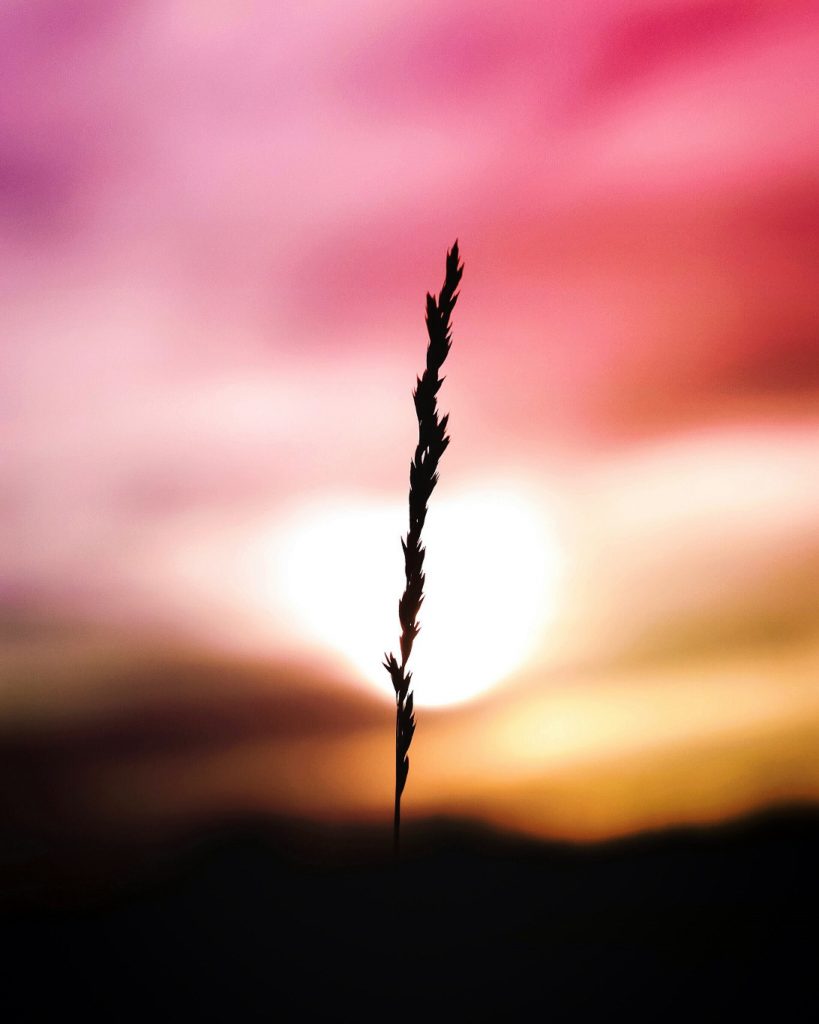
Suddenly Sherbet by Jay McCullough
It is hard with the advancements and, of course, competition in photography these days. But we must not forget why we started taking photos in the first place. Yes, getting commercial has become important to some. Yet, for many of us who started photography as a passion, we shouldn’t lose our way. Through my journey in photography, I feel if we forget that first moment we started capturing and don’t continuously relive that feeling, then, however professional we get, at one point the taste and enjoyment of it will fade. Many photographers in the past kept clicking and stayed humble to their passion, which is why we always feel inspired through their work. Compromises may have been made, yet their brilliance remained true.
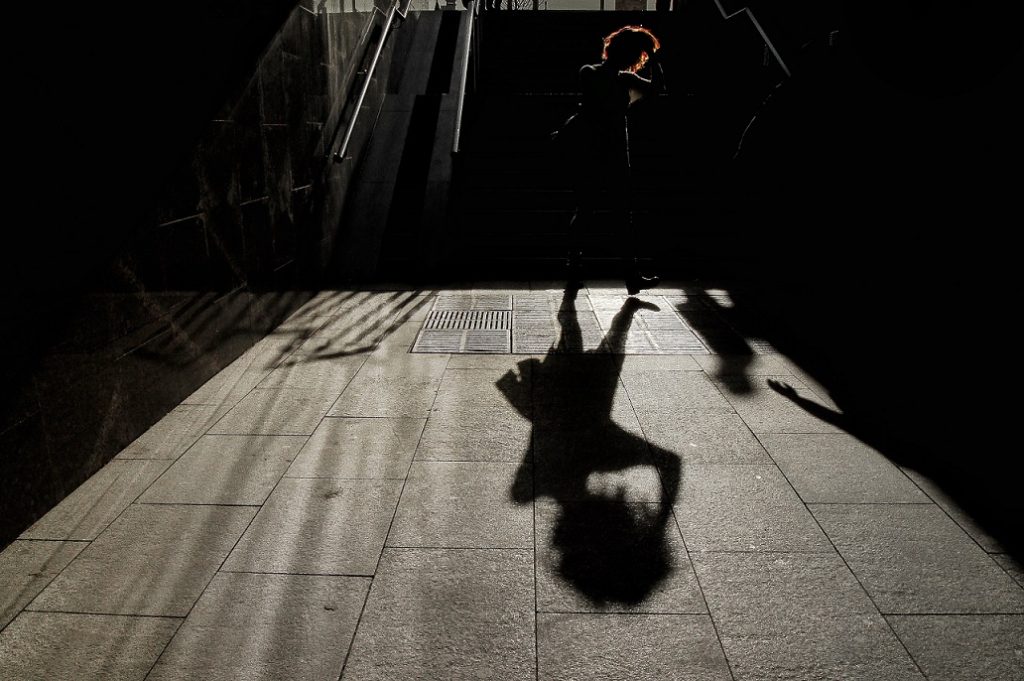
Light by Victoria
Coming across the feeds of Aki Sato (_akisato_), Victoria (vi.or) and Jay Mccullough (jmcullough) was one of those moments for me. Their feeds and photos bring a fresh feeling. The first time I saw their images, I was amazed at their captures, clarity and perspective. Each of them have different styles, unique in their own way. The idea and motive to keep it original has lost its way for many, but when seeing their feeds, I was convinced that there are some who want to stay original and be themselves.
Here are a few words Aki and Jay share about how it all started for them :
I live in Tokyo, Japan, and I’m an instagrammer taking photos with the iPhone 6s.
Photography has always meant something to me. But I’ve got a different point of view of my city and my photos after a Copenhagen trip in 2015.
Before I went to Copenhagen and Stockholm, I had no impression about my city because I’d been so busy at work. Tokyo was just a place to work for me. As you know, Tokyo is one of the busiest cities in the world. I had no time even to look up to the sky. In Copenhagen and Stockholm, I met lots of happy people. They were proud of their city and enjoyed their life even though they worked so hard like us. I really loved them. After the trip, the scenery of Tokyo was totally different from before. Everything looked very fresh, even if it was a flower on the street. The trip opened my eyes and it was so inspiring.
Also, I really love a simple interior and monotone fashion, even in my everyday life. ~ Aki Sato
I’ve loved photography since I held my first camera in grade school. This interest carried through high school and college, influenced by everything from Ansel Adams to Rolling Stone magazine. I’ve enjoyed photography throughout my adult life, but it became a regular and serious hobby for me a couple of years ago around the time I started using IG. Since then, my love and interest for photography has grown exponentially. From minimalism to mood to light to magical moments with my children… I could not be more in love with capturing beauty and artistic expression through photography. ~ Jay McCullough
Victoria’s words can be seen here.
Simple and minimalist are not easy to approach in photography. Some people have a sense for it and are able to capture the essence. Aki, Victoria and Jay have done a fine job in showing how simple things can stand out stunningly. Their photos speak of various moments. Every photo is telling you a new story. Aki’s photos form an intertwining story of their own and make you see Tokyo from a new angle. Victoria captures minimalism in street photography through her creative eye. Jay magically captures various moments in daily life filled with colours.
Let’s create the story through their photos below :
*With structure

Architecture by Aki Sato
She stood there on the stairs, whilst time stood still. She wondered and waited in silence for that one moment when her friend would say, “Hey, I am done, let’s go.” Once she saw the picture she was in awe of how beautifully her friend framed her in this simplistic setting.
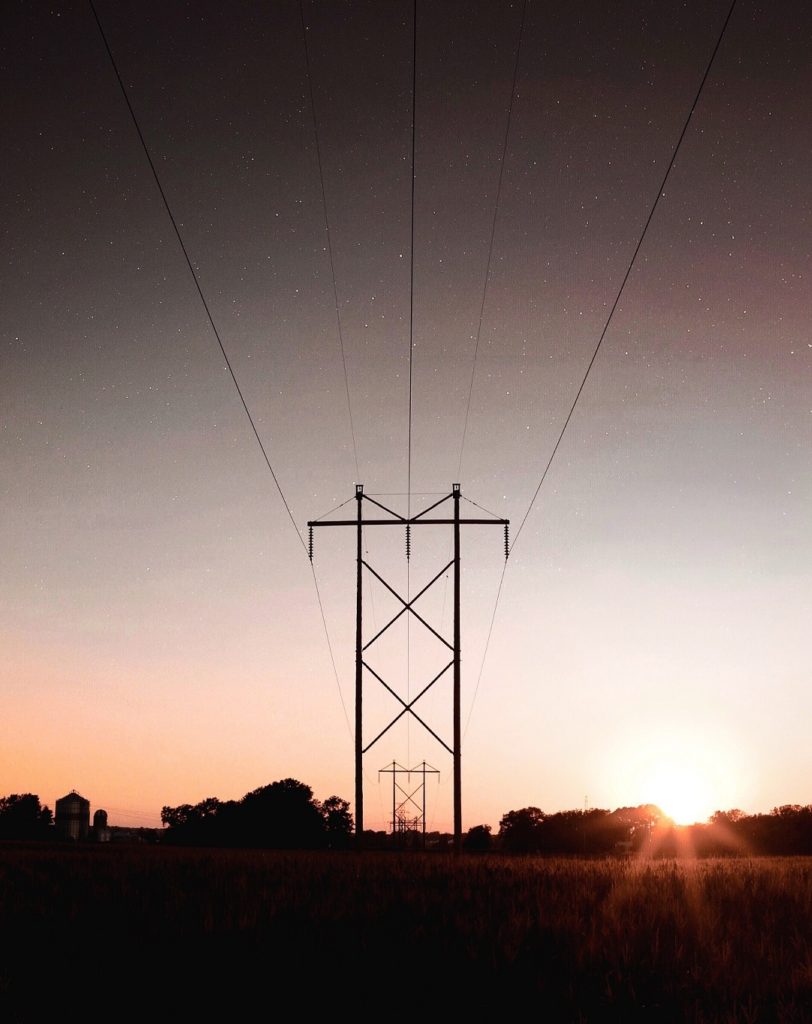
Midsummer Night Dream by Jay McCullough
He walked through the fields during sunset. The impressive lines from the power lines striking through the skies formed a lovely, simplistic structure. Intrigued by the colours of midsummer, a thought crossed his mind. “Should I enjoy this moment and let it pass or should I take my camera and hit the shutter?”
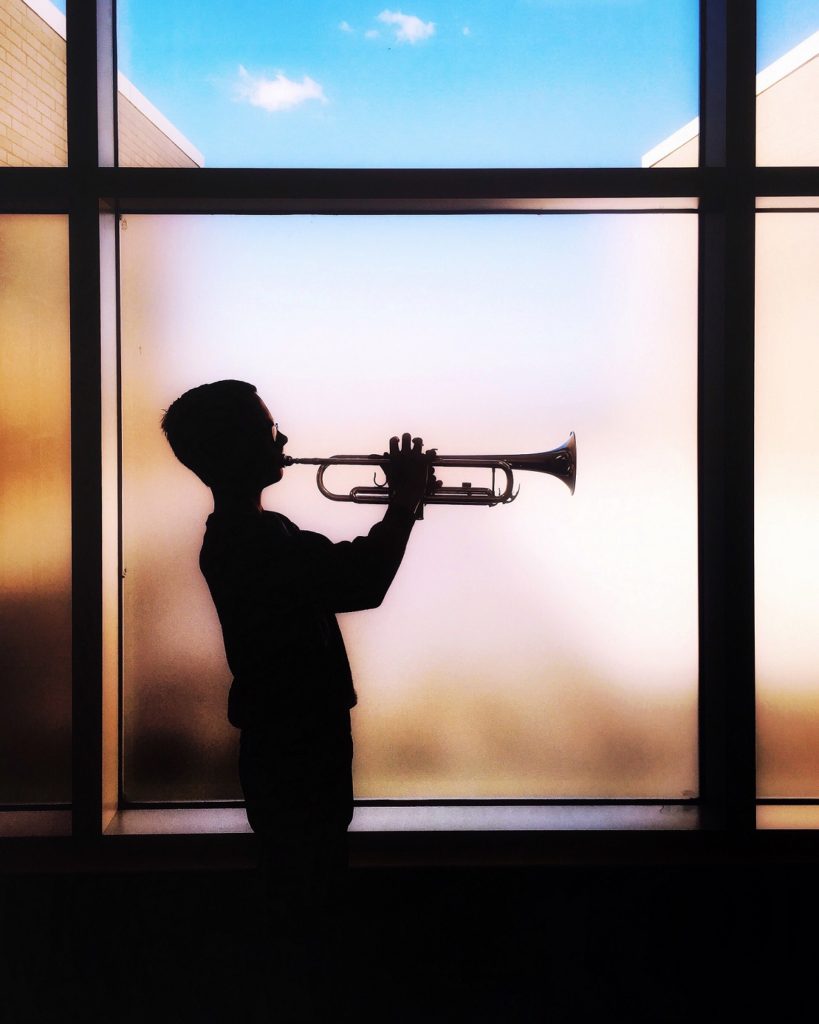
Paint the Silence by Jay McCullough
Melodiously, the voice of the trumpet resonates around the house, creating a classic and soothing rhythm. Everyone starts to enjoy the peaceful atmosphere whilst continuing their household chores. Jay, feeling inspired, pictures a colourful moment in his mind and instantly clicks.
*On the street
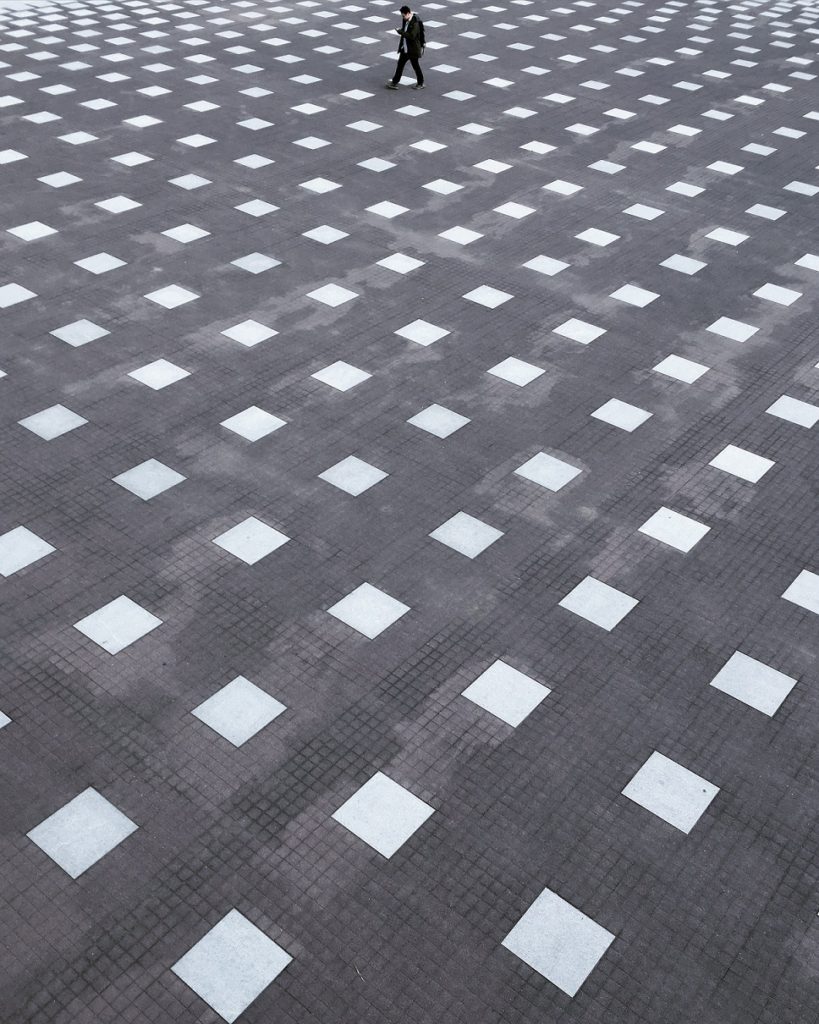
Street by Aki Sato
He walks whilst looking at his mobile after work. Checking his messages and missed calls on a quiet empty street. Oblivious and in his own world, from a distance, a photographer, triggered by the patterns on the floor, instantly captured this moment and, voila, he is frozen in it.

Green by Victoria
Her prominent red hair stood out against the teal background. As she passed by through the light and shadows, thinking of her next appointment, the photographer felt it was the perfect moment to capture. After playing with some angles, she finally clicked.
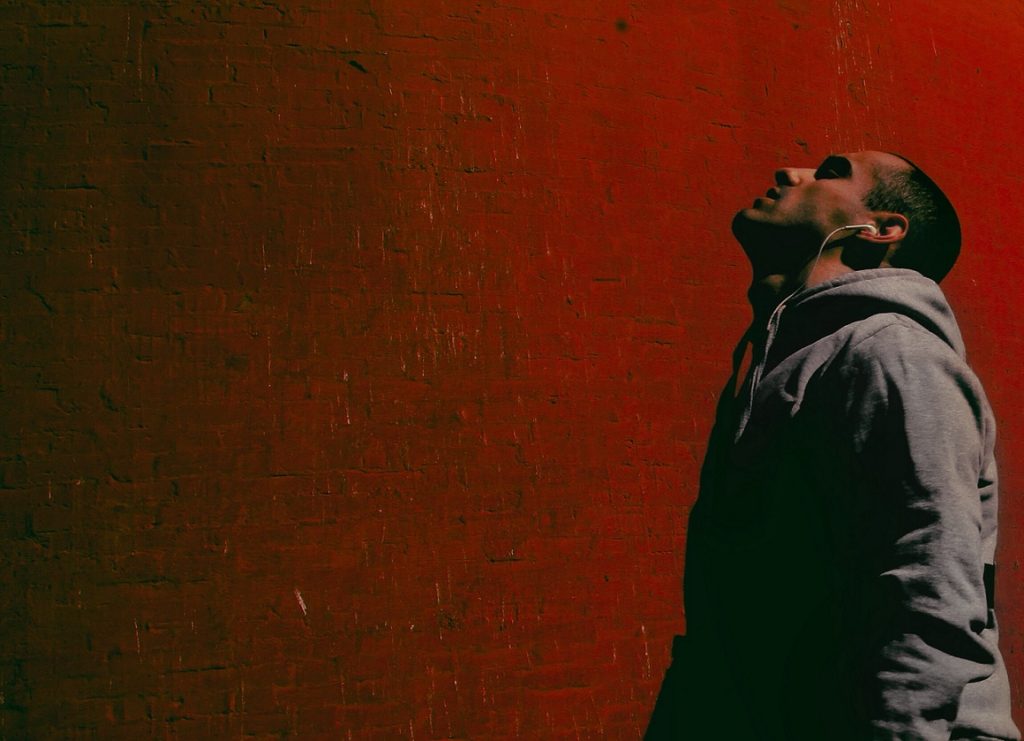
Red by Victoria
Lost in trance, the music flowed through him, bringing him to a new place and atmosphere. He felt carefree and refreshed embracing the moment. Victoria, forming the shot in her mind with the stark red background and the man rapt in his world, hit the shutter.
*At stairs
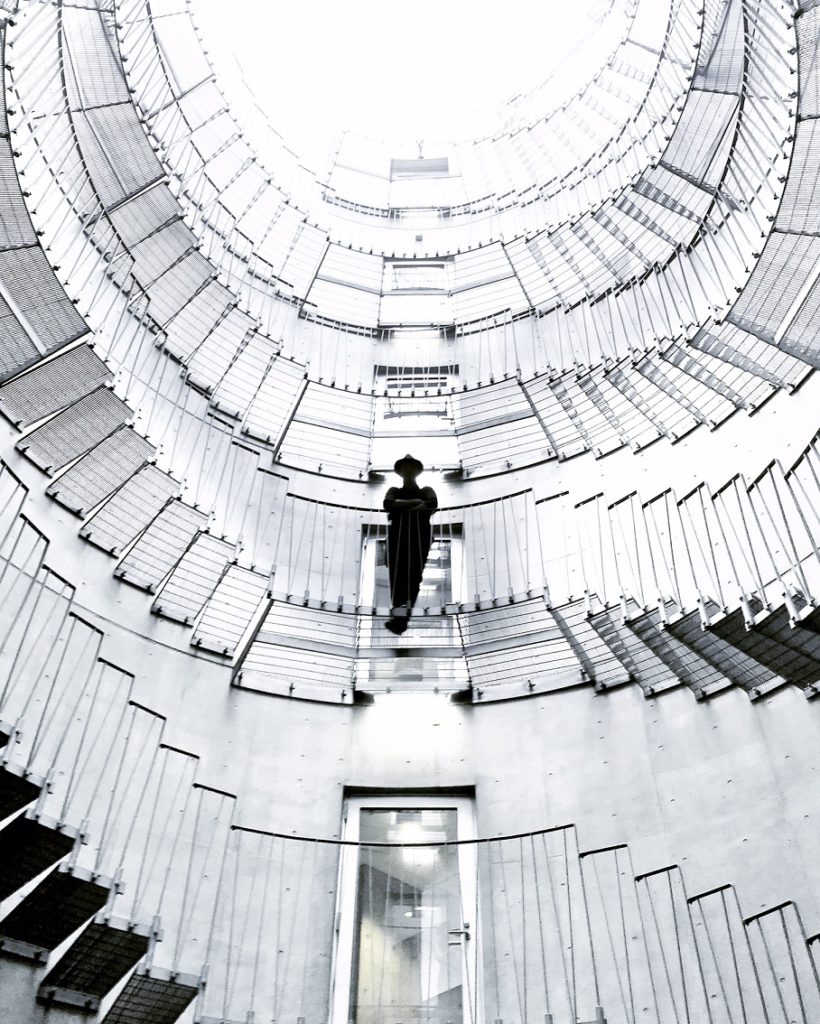
Stairs by Aki Sato
Standing at the center of the stage looking at the audience applauding his marvelous production, humbles him. He is proud of his first-ever successful moment. He thinks, “Wow, one day, it shall come true.” Looking up at the stairs spiraling through eternity inspires her to create a moment that stands still in times to come.

Stairs by Aki Sato
Running through the stairs of eternity, she looks through the crisp blue skies joyfully and blissfully. From behind, she hears a murmur, “Hmm, the steps look great. I wish she would climb faster so I can frame the shot and capture it.”
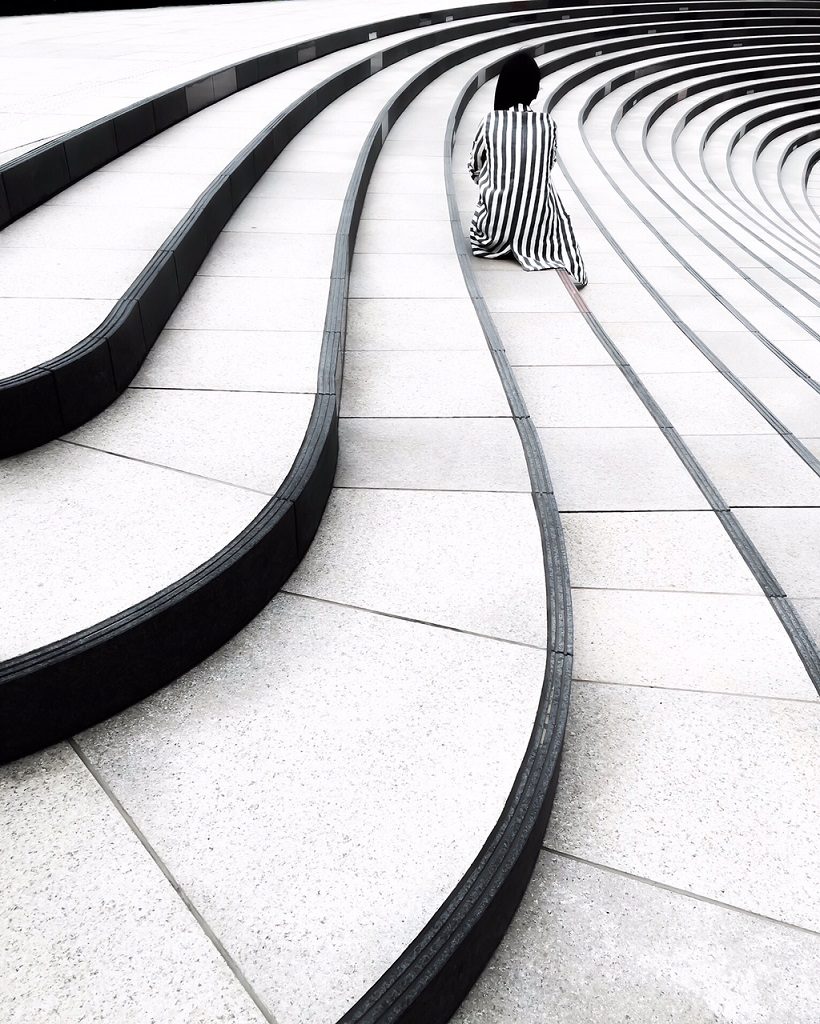
Stairs by Aki Sato
Wandering back into her past, and exploring her present, she sits contemplating how time has passed. Having no regrets and continuously moving forward in faith she smiles. Aki, her friend, through the flowing patterns and stairs clicks a vivid snapshot, then calls out, “Hey, look here, let’s go!”
*Chasing the shadows
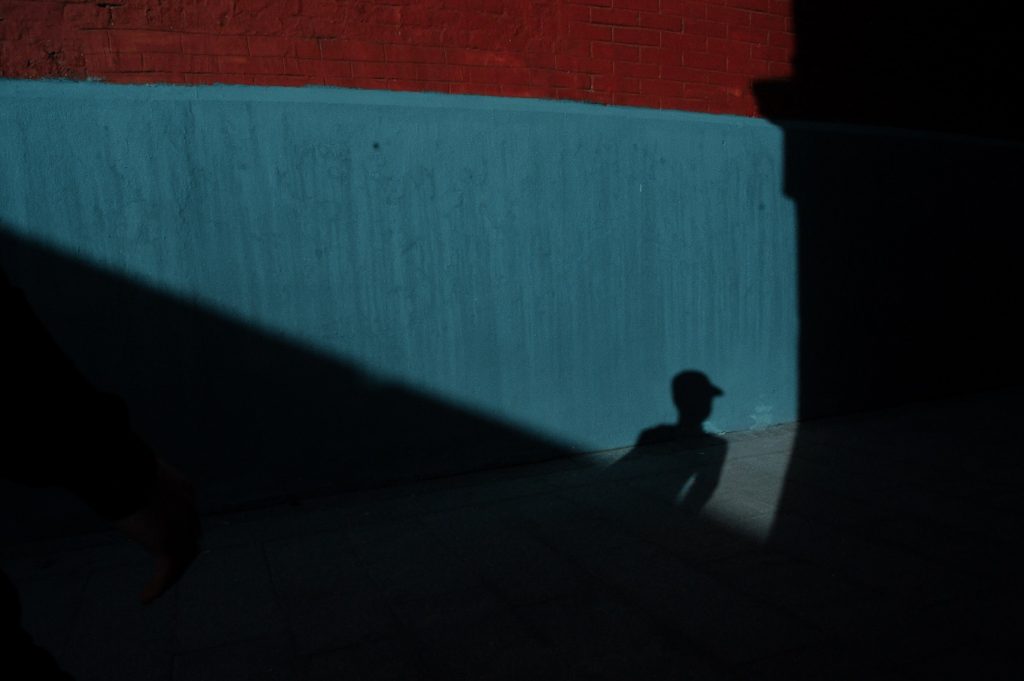
Blue by Victoria
In anticipation she stands peacefully whilst looking at the shadows and colourful background weave through the reflections of the sun. The subtlety of the moment injects her to create this lovely masterpiece.
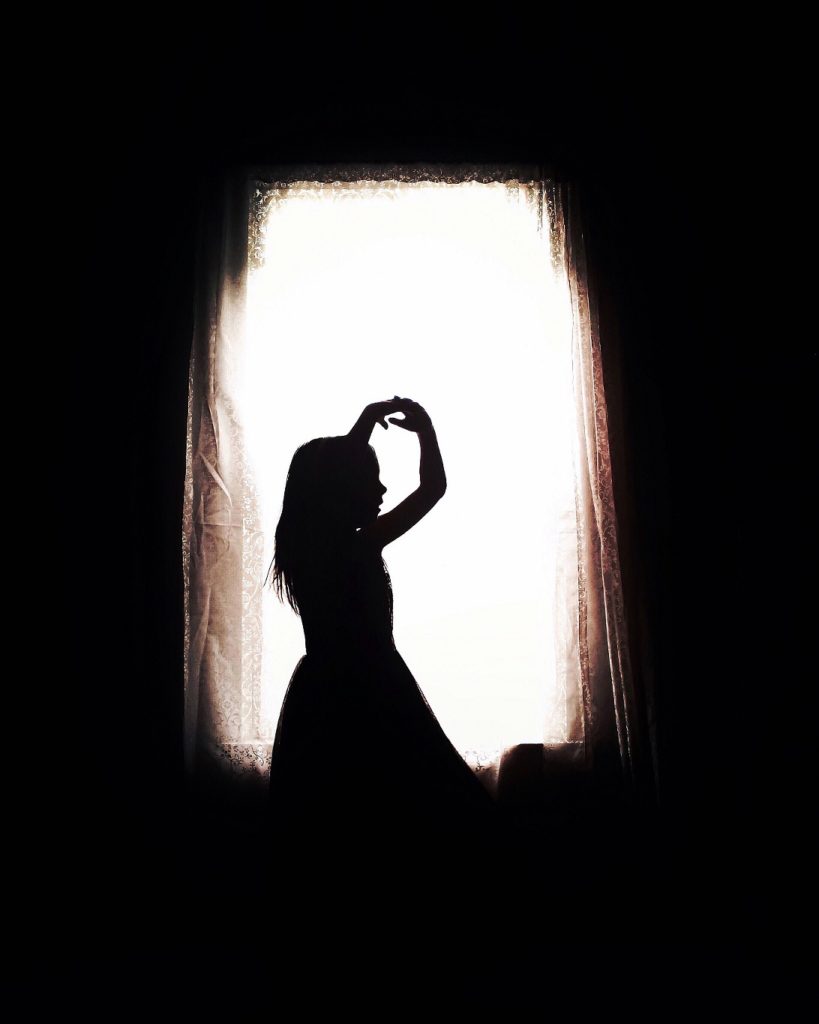
Dream Awake by Jay McCullough
Shyly, she practices ballet near the window thinking no one’s looking. Gracefully, she enjoys herself in the movements. Her father, quietly smiling, sees the opportunity of a beautiful moment to capture. Picturing the sunlight rays forming a shadow and lovely silhouette of his daughter, he snaps his shutter.
Through their photos and our personal photography journeys, we can see how we can influence one another. Changing vistas, new angles, patterns and structures bring with it a fresh outlook on photography. Let us continue to find our sparks in each other whilst growing to build our passion!
See more of their feeds on Instagram Aki | Victoria | Jay
Thank you, Aki, Victoria and Jay, for allowing me to express through your beautiful photos.

by Antonia Baedt | Jul 11, 2017 | Antonia Baedt, Mobile Photography, Stories, You Are Grryo
How my mobile phone helped me to discover photography and what I learned along the way
Not too long ago the number was 36. That was how many pictures you could take with one roll of film. I went through about three of them per year. Two for the holidays and another one for the remaining family get-togethers. The constant lack of remaining shots on the film, the hassle of taking that little black box to be developed – it’s safe to say, I wasn’t a fan. To me photography felt complicated and out of reach.
Digital photography came along and things changed. People around me still took photos of their holidays and families. But now it wasn’t 36; now it was more like 360. I would sit through endless photo presentations, but picking up a camera myself wasn’t an option. Things seemed to get even worse when mobile phones turned into cameras. I remember buying my first smart phone. “I want to make phone calls and send text messages, why does this thing have a camera?” Oh, sweet ignorance…
They get us all in the end
Eventually, while everyone else was already busy taking selfies and stuffing Facebook with pictures of their daily lives, my inner photo geek awoke. First, it would only stick out its nose into this wondrous world of social media and mobile photography, quickly retreating whenever someone accused it of finally being interested.
What really caught my attention were blogs and, of course, Instagram. There I found people using their phones beyond the odd snapshot. For years I’d visited Instagram pages in my browser. Just for their photos. The social part of the app was too far out there for that little photo geek. Consumption okay, but sharing? No way! It takes confidence to put yourself out there. Most Instagramers, like me, are not professional photographers. However, this isn’t National Geographic, it’s a phone app and we all learn a thing or two as we go along.
The best camera is the one you have with you
Yes, I know. Phrase-mongering! But it’s still true and I learned the hard way. It was my second visit to Australia. The first time I went, the camera I brought gave up on me after two weeks. So one year later I returned home with only two photos, and a travel diary, but that’s another story.
Armed with a new DSLR and lots of determination, this time I was going to get it right. However, DSLRs are heavy and did I mention complicated? So it stayed in my bag for most of the trip. Not so my phone. It saved the day more than once and slowly but surely taught me to approach photography from a different point of view. That of a storyteller.
Getting to this place meant a long hike through a dry river bed and the burning heat of the Australian outback. We started before sunrise. Guided by the light patches of white sand, we made our way through the bush and gum trees rattling in the morning breeze. Without sunlight the rocks appear black. They radiate the heat from the day before and there is a distinctive scent in the air that can put me back to Australia in an instant.
As we reached the bottom of the river bed, the sun began creeping over the edge of the gorge and turned black into glowing red. It was beautiful but also meant we were up against the clock. Walking back with the sun up was not an option. So when we finally got to the end of the gorge there was just time for a few pictures with my mobile phone. The big camera stayed in my bag the entire hike.
This guy was about as big as the tip of my thumb. There were thousands at this beach in Tasmania. We had a blast trying to capture them in a photo without having them retreat into the sand or running away. This was a beautiful place and sunset, but I would not remember it as vividly had we all not spent an hour or two chasing crabs with our phones.
There is a difference between capturing the essence of a memory and a snapshot of a moment
At some point during my trip I began capturing things simply for their uniqueness or beauty. These photos have no story, but they form one if I put them all together.
They aren’t about what happened but what it felt like to be there. The color of the water, the texture of the sand and maybe even the sound of the birds in the morning and the scent of the gum trees at dusk. The details of everyday life.
Suddenly everyday things become special
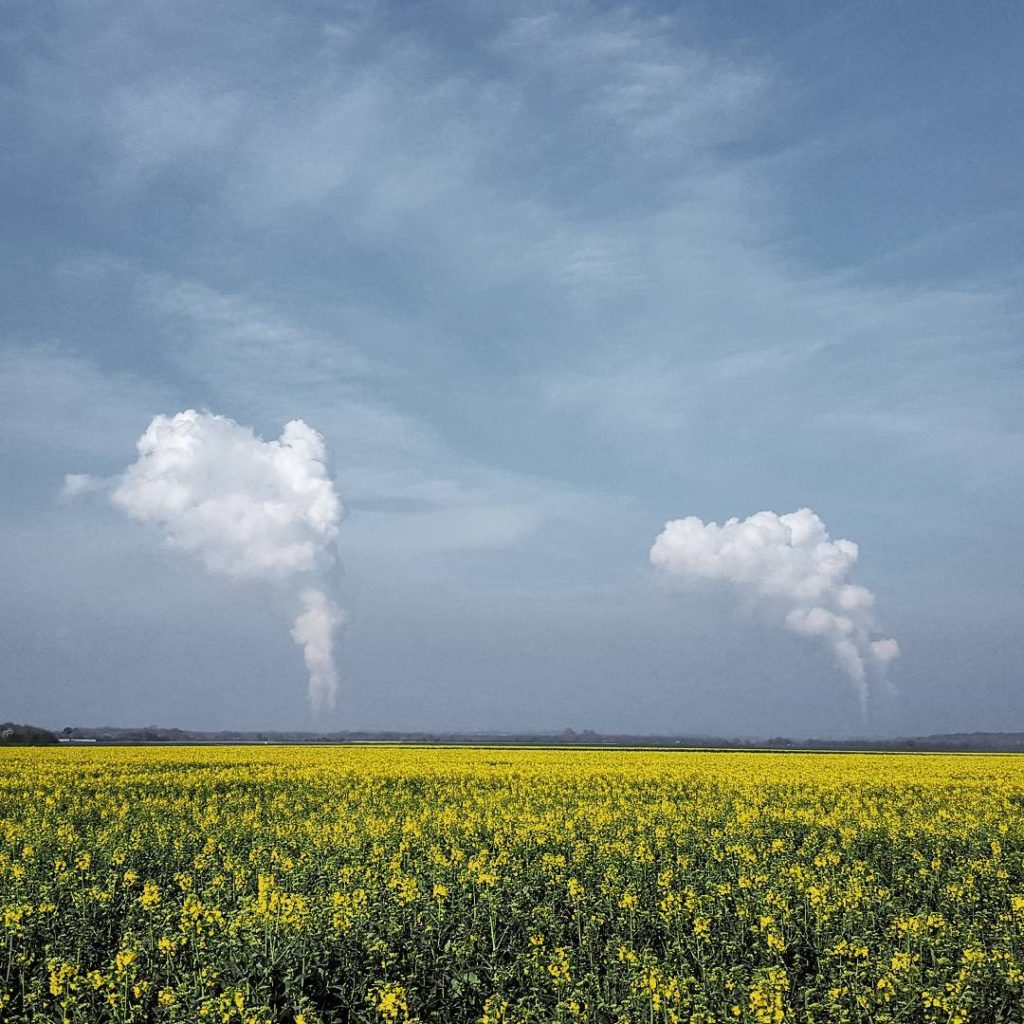
Power plant along a freeway.
We all know them. The things we pass by on our way to work. They are familiar and yet we rarely pay attention to them. Especially when they represent the negative things of what we do to our environment. This, however, caught my eye. Since my phone camera and I have become better acquainted, I catch myself looking for interesting shapes and colors. I had stopped at the side of the road for the canola field, but ended up posting this on Instagram.
Sometimes a picture can make my day. Like the cool T-shirt you got for a bargain or the train you almost missed.
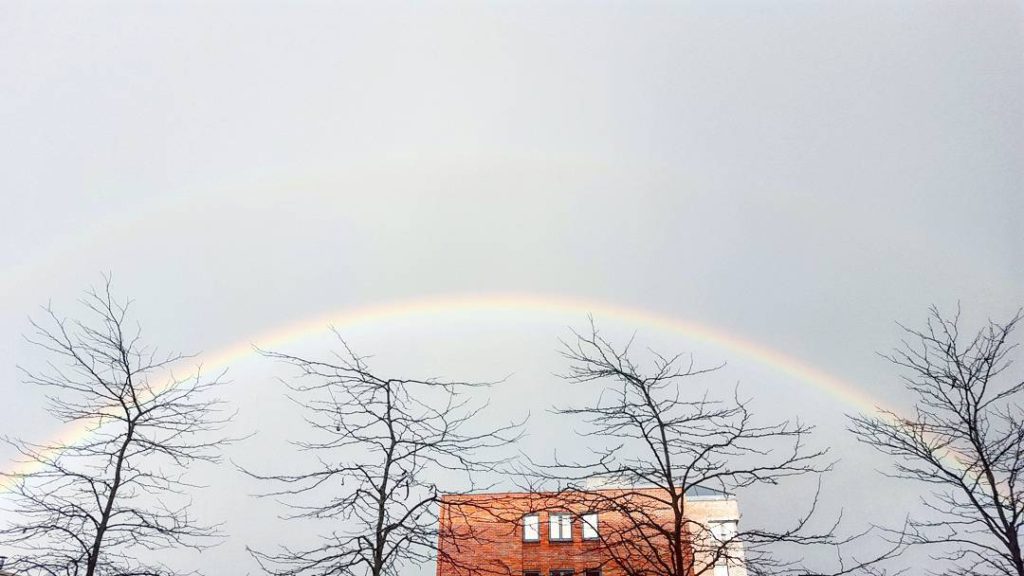
The perfect ending to a not so perfect day at the office.
For the non-professionals among us, our phone can be our best friend
I admit, I like my DSLR and I use it often. There are things that my phone just can’t do and I enjoy the challenge of learning about exposure, aperture and all those other things. But there are times when it’s not my camera but my ability to use it that reaches its limits. And more than once my phone has gotten me the photo I wanted.
This is not fog. It’s the heaviest rain I have ever been in. A sight to behold, but my camera wasn’t happy. Holding the camera in one hand and the umbrella in the other I just couldn’t get anything in focus. Freezing, drenched and quite annoyed I finally took a few shots with my phone. Not perfect, but sooo much better.
My phone makes me a hunter for opportunities
I am a writer and sometimes I desperately look for a picture to illustrate a thought. That’s when I go on secret photo missions. Wherever I go, I try to create an image that will translate that picture in my mind into something others might recognize.
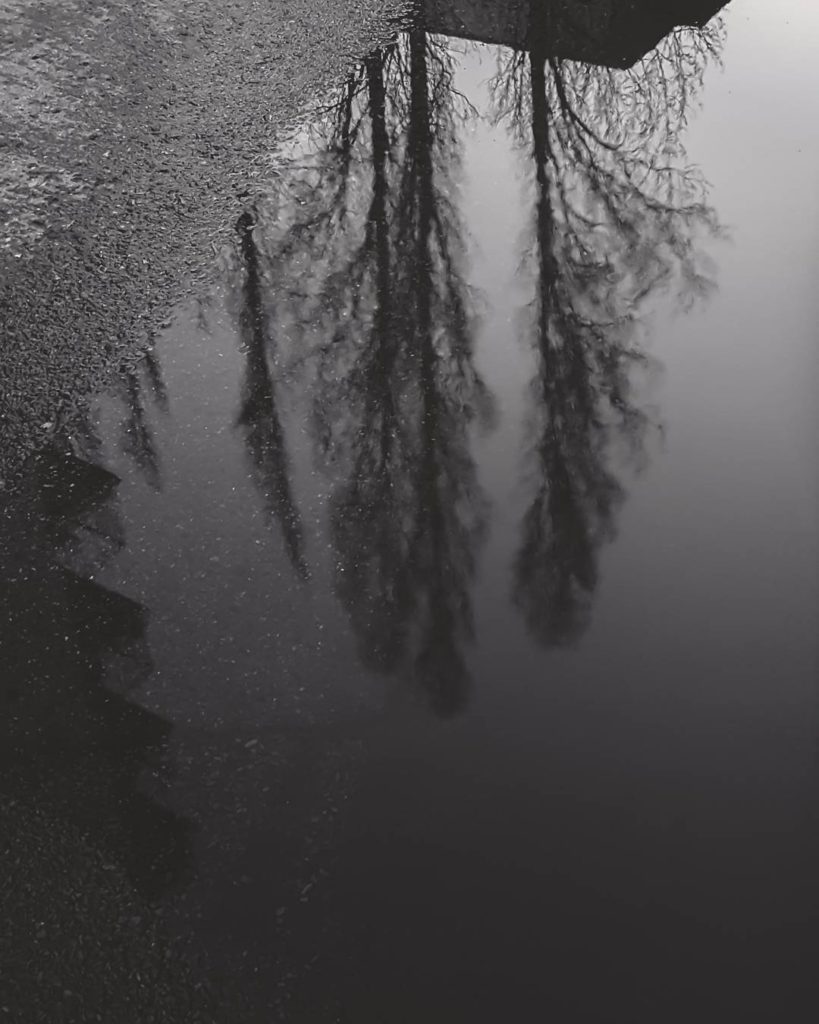
Instagram caption: What if you could jump and dive into that other world?
And sometimes it is a song.
“There is nothing more difficult than talking about music.” – Camille Saint-Saëns
? Camille Saint-Saëns – The Aquarium, Carnival of the Animals ?
Gadgets – every photo geek’s dream
Be warned! There comes a day when even the humblest mobile photographer opens their bag and it’s full of equipment. Halfway along my journey, I discovered gadgets. My favorite is this tiny lens that produces the most amazing macros.
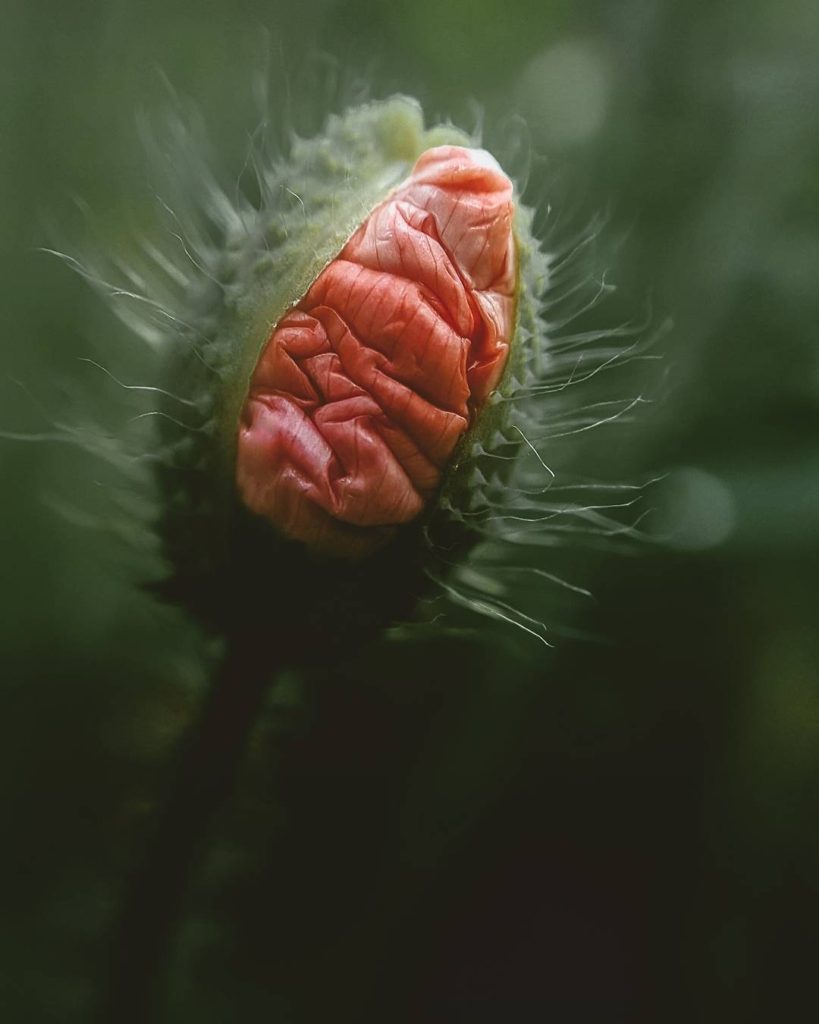
The Alien – A beautiful poppy, so creepy up close.
My next lesson is how to do street photography. It helps to only have my phone. It doesn’t feel as intrusive when I sneak up on people.

Lovers on the love lock bridge in Cologne
There is still a long way to go before I master those intense portraits taken on a train or in a café. Let’s have a talk about your friendship with your phone or how to tackle those little photo geek insecurities. Find me on Instagram @tonivisual and say hello!
Thank you, Alexandra, for editing! @whisper_feather

by Anna Cox | Nov 10, 2014 | Anna Cox, Mobile Photography, Stories
A: Hey there! Thanks for joining us and sharing a bit more about you. Why don’t you give us a little background info.
D: I’m 46, married and father of 3, live in the countryside in Israel and work in a chemical engineering company. I never studied photography but was always drawn to it. I publish on IG under the username @dot4n, and by same name on AMPt website for mobile photography.

A: What is it about taking photographs that moves you?
D: Taking photos allows me to process the visual stimulation which could otherwise overflow me. Editing images later is done under a strong sense that I must lift-up reality as it’s never good enough as it is, being too small and too local. Things must look unrelated, locations unidentified, reality disguised.
A: Do you have a favorite image?
D: One of my favorite images, not being a landscape as what you noted you liked, but a shot with a sense of mood that I highly relate to. Pic is made from two layers put together. One is of a man standing on the shore at the sea of Tel-Aviv. He is clearly an immigrant, dressed so differently to what local people do. The sky is a shot of a dirty window in my office cafeteria, dust smeared to resemble rain. This is probably the most exact story I wanted to tell of being far away, in a totally strange location with vast space, quiet and moody.

A: What do you think creativity is?
D: I don’t know what creativity is. I want to tell a story. I want to relate to others. I want to repeat myself as little as possible. There’s no deadline for publishing. Pics are posted when I feel they’re ready. And if posted too early I take them off.
A: Who are you inspired by?
D: Mostly, what I know of photography now comes form IG and AMPt. I am inspired by many users, mostly by those who aren’t afraid to be creative and post regardless of the popularity of their pics.

A: Was their a pivotal moment in your photography?
D: I don’t recall any pivotal moment. I thought it would happen with the next follower, but it was never different. Eventually it’s the inner discussion about what you believe worth posting and not the amount of feedback you get.
A: Do you think the number of followers matters?
D: Followers serve as false assurance. You always think that more of them would make you happier, but it never works this way.
Having many followers impresses only people with less followers than you do, if at all, but it does distract the attention from what you want to create to what would make your followers like and comment and to what would bring more followers.

A: What does community mean to you?
D: Community is anything that would make you belong and be less alone. On IG this feeling comes more from the comments I get than the number of likes. I don’t feel I need more than this. I don’t post on Twitter and hardly take any part on Facebook.
A: How do you think social media has changed how we share thoughts, ideas, photos?
D: Social media have become so common that people don’t regard the publication as something that requires self restraint or filtering on their thoughts. It’s not the case for me and I’m sure that also for other IG users. It’s always interesting to try and guess how much effort it takes for someone to share their pics. For me it’s always a struggle. My regular caption of plus-minus sign (±) also means that words don’t come easy, and ifthey don’t create any added value – better not be said at all.
// IG // AMPt //


by Jeff Kelley | Oct 27, 2014 | Jeff Kelley, Mobile Photography, Stories
I discovered the account Me & You, 52 on Instagram a couple of years ago and was drawn to it for two reasons- one was the weekly themes that gave me something to think about creatively. The other was the purposeful pairing of two pictures, created by two different photographers, into one diptych. It was a concept I hadn’t run across before. I ended up chatting with Anika Toro, one of the co-founders about it- here is her story:
J: Tell me a bit about how the idea of Me & You, 52 was conceived?
AT: Me & You, 52 was started in 2011. Christy and I were on the Blogosphere a lot. I had hosted a link-up on mine for mobile photography. We had both just gotten an iPhone and I think it changed the way we both looked at taking photos. Christy contributed her shots every week to the link-up and we began a virtual friendship. When we both started blogging less, I asked Christy if she wanted to collaborate in some fashion. We both loved mobile imagery and so we went from there. She had followed a side-by-side Polaroid project called the Polaroid Girls; I contributed to the defunct diptych project called The Miss Match Project – we both had a love for diptychs! We wanted the project to span one year, 52 weeks, and to be prompted by something new each week.. So we decided that we could shoot for two rounds of the alphabet – we would follow the letters of the alphabet to guide each week’s word, each week’s inspiration. When we got to the end of the round we realized that the creative push from the project was sometimes the driving force to keep us producing. It challenged us to come up with ideas we wouldn’t have thought of if it weren’t for the project. So we went for another year!

“H is for Horizon” by @deuxpieces
J: When did the project grow from just the two of you to include others?
AT: In early 2013 we both thought it would be even more fun to include other people’s perspectives. More people were using their phones to create art and experiment. It seemed like a good time to involve more people. The more the merrier! I have always loved collaborating and so think that I enjoy the project when it feels like more people are contributing their viewpoints. We all see things in our own unique ways but sometimes we happen to think of the exact same thing, sometimes we imagine the lighting the same way, sometimes we happen to use the same apps, and sometimes we come up with something nobody else thought of. Then, when images are connected into a diptych, a story, they become something even more… They become half of the story -The Me to the You, the You to the Me. For me, one of the best things about this project is the serendipity. The connections made between our unplanned images start to get this groove where it’s not just a narrative that takes shape but our horizon lines match up, shadows blend perfectly into another’s image, the story on one side completes the end of a story we each didn’t know the ending to. More artists means more interpretations, perspectives, inspiration, and more possibilities for impromptu story telling.
J: The serendipitous pairing is definitely one of my favorite parts of the account. We end up seeing the visions of three artists in the end- the two created by the individuals, and the third created by you, who has paired them together. Can you pick a few of your all-time favorites and tell a little bit about them?
AT: Wow, well thanks so much. Funny, but I feel like the diptych is second to the idea of mobile-only imagery. I honestly haven’t really thought of it that way…until right now. I think of the storytelling angle, yes. But I guess I feel like I am facilitating a presentation for each image so that it can shine even brighter on its own while working in tandem to strengthen its neighbor’s image. Even though a collaboration of sorts, I think of this project as an individual challenge; one created by the participating artists. We each contribute our images without knowing what the other will be creating. Even I try to stay ahead of the group so that I am not swayed to create something to match with another member’s image. We all to come from the same place of not knowing, of using just our own experience to create from. That way when images are put together it seems even more magical how they match up. It’s like the personal inspiration comes first, the connections come second. That said, I have always really loved the story telling of two images.
I do have a couple of favorites. The first pairings that come to mind are from the beginnings of the project when it was still just me and Christy. Most of the earlier diptychs were less narrative and more graphic in nature. For example, with “E is for Eyes”. Our styles are quite different but seem to go together well in this duo. We were both inspired by that week’s theme. I feel like this diptych really showcases what we were trying to do when we started the project.

“E is for Eyes” by Anika and Christy
With more voices come more possibilities for narratives. I just posted a diptych with an image from Claire and an Instant Lab image from Chris. It’s beautiful. They both were on the same page as far as the idea and even the coloring! I was blown away when I got the second image of this pairing…it was too perfect. This one for me, now, feels like what the project has become.

“G is for Guide” by Chris and Claire
It’s nice to see how this project, this collaboration of sorts, is evolving. I think that’s why I am drawn to a current pairing with Christy. It’s interesting for me to look back and compare it to our earlier connections. This was from a few weeks back and is “D is for Double”.

“D is for Double” by Christy and Anika
J: Can you tell me a little more about Instant Lab and the Deuxpieces account?
AT: Gladly. During the last round {Round 5} I learned about the Impossible Project’s Instant Lab. It was like a little fairy produced this magical camera – one that combined the spontaneity of Instant photography with a mobile device! It seemed like the perfect thing to add to Me & You. This all began with a love for mobile art; why not showcase it in another form? I decided to seek out some Lab users who may like to join the project. I tried to find artists that were passionate about instant photography, had experience using the Instant Lab, and that had a strong unique style. {I think it may have also been an excuse for me to justify the purchase of more film.} You know, every one of the Instant Lab shots, so far, have lined up perfectly with its partner…it’s wild! Here is an example, “A is for Arch”. The Instant image {on the right} is by Keith. It is partnered with Monica’s image. To me it’s like one image is an abstract drawing of the other. I love this one. The addition of the Lab has been very inspiring.
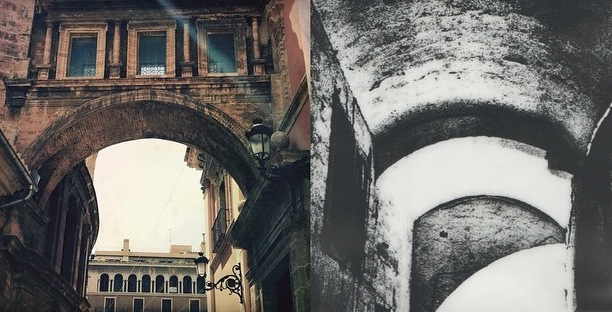
“A is for Arch” by Monica and Keith
Also, new for round six is Deuxpieces. Deuxpieces is an ongoing diptych project between Elke and Corinna. I had known both Elke and Corinna from those way-back blogging days and have admired their photography and stories ever since. We had discussed, a round or two back, how we might be able to work together and so for Round 6 we figured out a way. The difference in their creations is that they make purposeful connections. One of them will play off the other’s image and work from there. Sometimes their diptych is connected by color or design, sometimes it’s planned conceptually, and other times one half of the diptych is half of the other’s half. It’s a great project! M&Y has always been about connecting the unplanned but the addition of Deuxpieces adds the intentional. It’s interesting to compare the processes and see what two people working together come up with for the same exact inspiration that individuals create for (for example, “H is for Horizon”, shown at the top of the article).
—–
If you’d like to get involved, feel free to follow the Me & You, 52 account on Instagram and add to the #meandyou52 tag. You can also visit the blog site online, or if you are interested in being a part of the future of the project, you can contact Anika at anikatoro@gmail.com.

by Grryo Community | Oct 1, 2014 | Mobile Photography, Stories
Capturing the Colonias of Acuña, Coahuila (Mexico): An Interview with Jessy Menchaca by Matthew Wylie
Jessy Menchaca (Del Rio, TX) began mobile photography in 2010 and has since had her work featured via The Mobile Photo Awards, various EyeEm events, Hipstography, Visure Italia, and both Street Expose books. She is a proud new mother of her daughter Chloe Londyn, who, each and every day, woke up like this.
I spoke to Jessy about her recent visit to Acuña, Coahuila and her desire to capture the family life, value system, and work ethic of those residing in the colonias of Acuña, Coahuila – Mexico.
Matthew: I can’t help but notice an eye in your photographs, at least many of them, that seems to focus on issues of class and ethnicity, particularly that of the Mexican / Latin American working class identity. Can you speak to us at all about this and what you are attempting to do, or say, when capturing these moments, let alone sharing them with us?
Jessy: When shooting in Mexico, I normally visit the not so privileged neighborhoods (known as “colonias”). The people in these neighborhoods, on average, work 60 hours a week for a compensation of about $70 U.S. dollars. Their ability to stay positive and happy, considering their circumstances, is a quality that evokes interest in me. These people manage their household and families on less than $100 a week, while foreign corporations pocket the profit that results from “cheap labor.”
The citizens of Acuna, Coahuila have taught me that when there’s a will, there’s a way. While photographing, I always hope I can capture their persevering spirit. This is something I admire in the Mexican people.



Matthew: This makes me think of the privilege you (us) have doing what we do. I mean, from the privilege of having a piece of equipment like an iPhone, to the privilege of being able to walk around with it in broad daylight without concern, do you see your privilege as a form of responsibility to use it for reasons like this, such as sharing the stories of those who can’t? I think you’re not just seeking to capture their “persevering spirit.” You seem to have something else to say in the sharing of these photographs with the rest of us, no?
Jessy: I’m trying to share some of the circumstances that Mexican people struggle with. Observing them from my moving vehicle, while getting captures with my iPhone, helps me to understand why, to some of them, crossing the border and migrating into the U.S. in an illegal manner would seem like an “opportunity.” When I share the photos, I hope that those who are intolerant and quick to suggest “Mexicans should go back to Mexico” realize and understand where these people come from and why they might desire to leave. There’s nothing attractive about living in a third world country and making $70 a week. In my opinion, if the U.S. and other foreign corporations that operate in Mexico compensated labor in a fair manner, maybe the quality of life in Mexico would increase and less Mexicans would consider taking the risks involved with migrating into the USA. Make no mistake, I’m not saying “Open the borders and let them all in!”, no, not at all. I just would like to spread consciousness and hope for a bit of understanding towards their situation, and, living in Texas, ours.


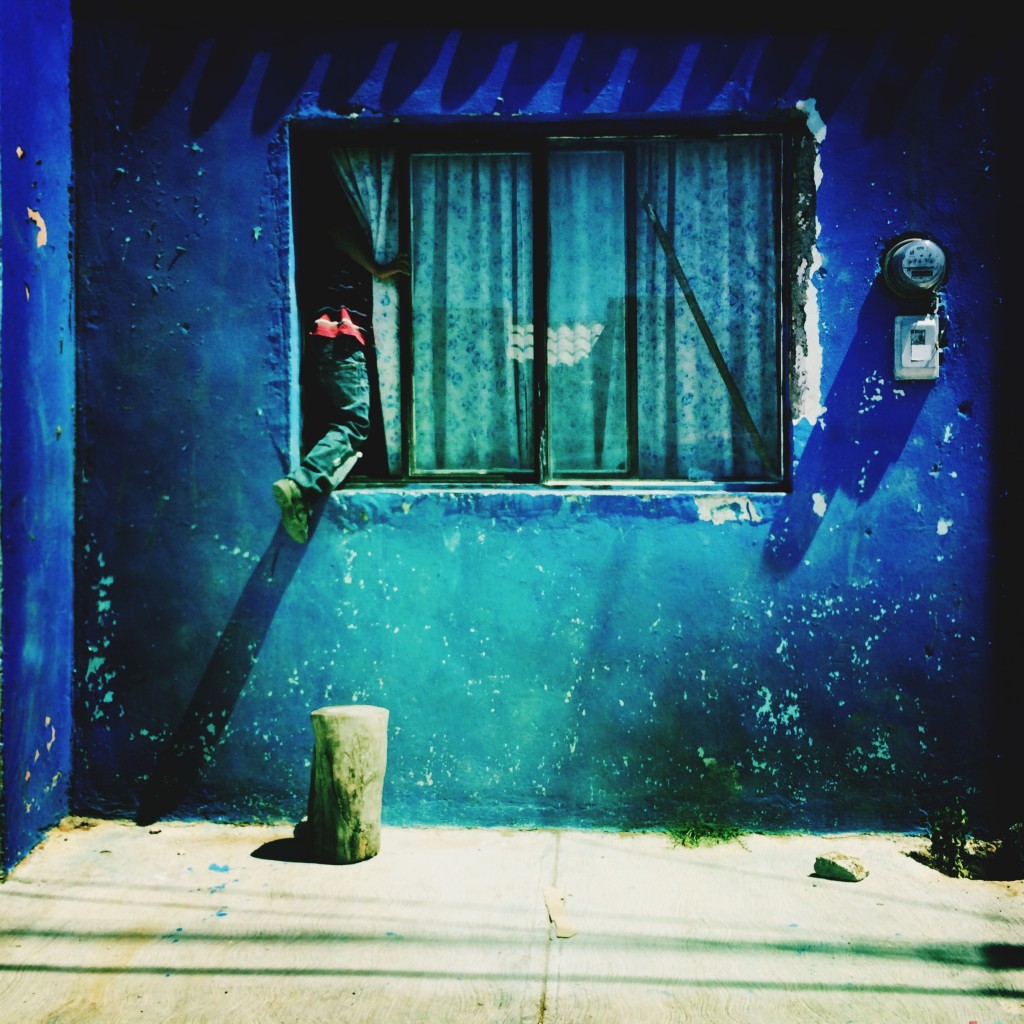
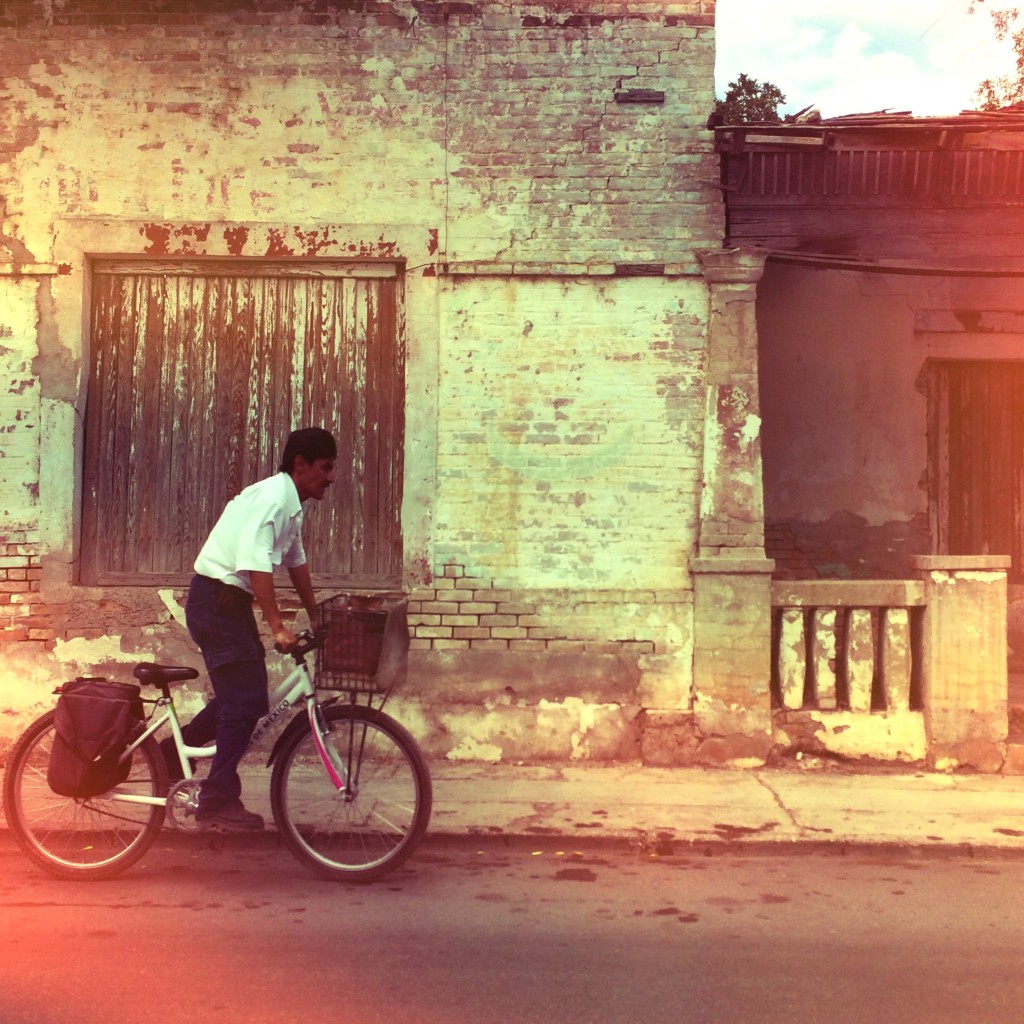
Matthew: In terms of the idea of photography being more than capturing “pretty images,” which is, in my opinion, far too often the case for mobile photographers, both amateur and professionals alike, I wonder if there is any one photograph (or even photographer) that for you, personally, has helped you “understand” a situation that you previously simply did not?
Jessy: The work of Louie Palu while covering the drug related crisis along the US-Mexico border was an eye opener for me. His “Mira Mexico” portfolio reveals who has been affected the most by this conflict. It’s a very explicit visual narrative of this ongoing crisis.
Matthew: Can you tell us a bit about what it is like to compose your narratives / make your captures in the colonias you mention, rather than in your own city? Did any of this make you think differently of what you are doing with your photography?
Jessy: Photographing in Mexico is more attractive to me for many reasons. The people seem more aware of their surroundings due to their general inability to purchase technology. As such, the streets are filled with children playing with old tires, cardboard boxes, deflated soccer balls, or any other item that requires the direct use of their imagination. Women can be seen gossiping with each other, or sweeping the sidewalks and men are usually seen working on something, whether it’s an old car, their house, or anything else that needs fixing. Most of these scenarios simply can’t be found in U.S. cities as frequently, at least not the cities I have spent time in. For example, I’ve searched for similar scenarios in Los Angeles, California to New Orleans, Louisiana, and all over Texas, my home state. What I have found, everywhere, is that people seem to be too busy living their lives of undeniable privilege. Children play on electronic devices, women gossip through social media and men pay other men to fix their broken items.


Matthew: Are you not also seeking to capture something that we, as a society in general, are losing? Might you also be seeking to “capture” this too? You seem to remind me of how photography can help us see what we may have not seen otherwise, and what you are talking about is not just a moment, but an entire set of cultural and social values and habits.
Jessy: One of the things that I fondly admire is that the people of these colonias seem to retain this unique sense of innocence, something that is not easy to find and normally lost through the materialism that pervades the U.S. They seem to find happiness easily, and not simply through obtaining material possessions. I admire how they’re not preoccupied with “Keeping up with the Martinez,’” so to speak.
The U.S. seems so often to be an “all about me” society. With the Mexican concept of family life, this type of egotism just is not as prevalent. This is something I also admire. The difference was highlighted to me some days ago by one of my very own relatives, who happens to be a second generation American citizen. While going through some of my photos, he said “It’s crazy how this woman is so young and has pretty much given up on her life because now she has to care for all of those kids!” I looked to see which photo he was referring to and it was a photo of a young Mexican woman, ready to cross the street with her two children. He was so quick to pass judgment, never stopping to think that maybe this woman, like many Mexican women, believe in forming families, even if that need is determined by their environment. What if that was the life she chose (rather than seeking one in the U.S., legally or illegally)? What if that is what makes her happy and complete? Mexicans are exposed to the same media as we are, they have dubbed versions of our same films, same reality tv, and they at times sing along to the same lyrics people in America do. Even with all of this, they still consider forming a family, and managing with a very light income, living an “accomplished life”. #VivaLaFamilia



Matthew: You are a mother of a newly born child (congratulations again!), and I wonder, what advice might you give to young people today who may see the camera in the mobile device primarily as a means to self-glorify, or socially interact?
Jessy: I’d tell them to live a little more and worry a whole lot less about looking attractive for strangers. Coming across shallow “selfies” on any social network really irks me. It is rather unfortunate that females need to be validated by the amount of “likes” they can obtain by showing off their physical attributes. When I come across an attention seeking post, I always wonder “who raised you?” I was taught that I don’t need for anybody to validate my existence. Only I can do that for myself.



Matthew: Jessy, thank you for your time and for sharing your time in and impressions of the colonias with us.
If you will permit, I would like to conclude the interview with the famous Benard Pivot questionnaire that is actually a take on Marcel Proust’s (one of my favourite authors) set of questions, because that’s just how I roll. You good?
Jessy: Bring it on.
Matthew: What is your favorite word?
Jessy: “Fuck”
Matthew: What is your least favorite word?
Jessy: “Can’t”
Matthew: What turns you on?
Jessy: Self-confidence and the smell of good cologne
Matthew: What turns you off?
Jessy: Lack of self-confidence
Matthew: What sound or noise do you love?
Jessy: Chloe’s (my daughter) baby gibberish
Matthew: What sound or noise do you hate?
Jessy: Racist remarks
Matthew: What is your favourite curse word?
Jessy: “Fuck”
Matthew: What profession other than your own would you like to attempt?
Jessy: Samba Dancer
Matthew: What profession would you not like to do?
Jessy: Anything in the medical field
Matthew: If heaven exists, what would you like to hear God say when you arrive at the pearly gates?
Jessy: “Hi Jessy, what a ride! Nice heels. Your Dad has been patiently waiting for you.”



























